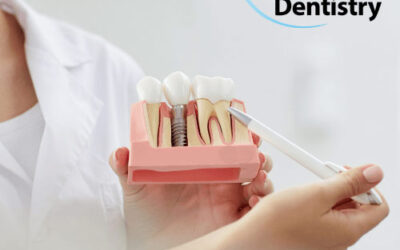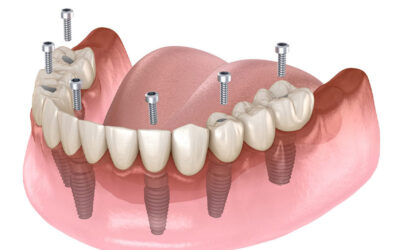Are dental implants painful?
If you’re interested in getting dental implants, you may be wondering how the procedure works and what kind of pain is involved. When it comes to comfort, dental implants are among the most comfortable options available for replacing missing teeth. While there are some minor side effects associated with the procedure, they are generally mild and go away quickly.
While the procedure is usually painless, there are some potential side effects.
Dental implants are a safe and effective way to replace missing teeth. They’re made of titanium, which is a biocompatible material that can be placed directly into the jawbone so they can be very strong. The process of placing dental implants is also known as osseointegration–this means that your body will actually grow around the metal implant in order to anchor it in place (instead of just attaching an artificial tooth).
Our Treatment Warranty Your Peace of Mind
We’ve devised a comprehensive warranty to protect your investment and give you absolute peace of mind.
The first step in implant dentistry is creating a space for the new tooth to fit into.
The first step in implant dentistry is creating a space for the new tooth to fit into. This can be done by removing any existing teeth, or by using an abutment that allows you to keep your natural teeth intact. The second step is placing the implant itself into the jawbone (or gums) where it will be securely anchored.
There are two main types of implants: endosseous and subperiosteal/immediate loaded. In endosseous placement, an incision is made through which a screw is inserted into bone before being covered with dental cement; this type of procedure requires at least 6 weeks of healing time before placing any replacement crowns or bridges on top of them. Subperiosteal/immediate loaded implants require less recovery time because they’re placed underneath soft tissue rather than inside hard bone–but they’re also more expensive because they require more specialized equipment like lasers and sizers to ensure proper fitment between implant surface and surrounding tissue.”
The second step is attaching a prosthetic tooth or crown to the implant.
The second step is attaching a prosthetic tooth or crown to the implant. The dentist will use a special glue to attach the prosthetic tooth or crown to the implant. In some cases, your dentist may recommend using a temporary prosthetic tooth or crown while your jawbone heals.
After the implant has been installed, you will wear a temporary replacement tooth while your jawbone heals.
Once the implant is installed and your jawbone has healed, you’ll wear a temporary replacement tooth while your new smile comes together. This will help to protect the area from damage while it heals, but it’s also important to know that implants can be removed if needed.
**
In a friendly tone
The first step in getting an implant is making sure that there are enough healthy nerves and bone structures in your mouth to support one. If there aren’t enough of either, then it may not be possible for you to have an implant put in at all!
When you come in for your consultation, the dentist will carefully examine your mouth and jawbone to make sure that it’s a good candidate for implants. If there are any issues, they may recommend other options instead of implants—such as wearing a fixed bridge or getting dentures. They’ll also talk with you about what kinds of materials can be used for the implant itself.
Once your gums have healed and there are no longer any signs of infection, our dentist will make an impression of your teeth and create a custom abutment that connects to the implant.
Once your gums have healed and there are no longer any signs of infection, our dentist will make an impression of your teeth and create a custom abutment that connects to the implant. The abutment is then connected to the implant using dental cement as well as other adhesives.
The final step involves attaching a crown overtop of this attachment, which is done by placing cotton between two pieces of wax (to create space for placement). This allows for a perfect fit before being placed overtop of the implant itself.
Our dentist will then construct a permanent prosthetic tooth or crown that fits over the abutment at home or in our office, depending on your situation and needs.
If you have had a dental implant placed, our dentist will then construct a permanent prosthetic tooth or crown that fits over the abutment in our office, depending on your situation and needs. The prosthetic is made by taking an impression of your mouth and sending it to our lab for construction.
In general, dental implants are not painful but may have some initial discomfort due to swelling after surgery or adjustment periods while getting used to chewing on them again after they have been out of use for some time. It’s important that you follow all instructions given by our implant dentist regarding post-operative care so as not to cause any unnecessary discomfort during this period of adjustment!
A dental implant may cause some discomfort, but it is usually minor and quickly subsides once it’s installed
In most cases, the implant will feel like a natural tooth. You may experience some pain or discomfort when the implant is inserted. However, this typically subsides within a few days after surgery.
It’s important to note that if you have multiple missing teeth or need to replace multiple implants at once (for example: replacing all of your upper front-teeth), it may take longer for your body to adjust than it does for people who are having just one new tooth installed per visit.
Dental implants are a great way to replace missing teeth and restore your smile. They can also help improve your oral health by preventing or treating gum disease. If you’re interested in getting an implant, talk with our Implant Specialist about their experience with this procedure and how they would approach treatment for you individually.
(954) 787-4144
Similar Articles
Understanding Full Mouth Dental Implants for a Healthier Smile
Understanding Full Mouth Dental Implants for a Healthier SmileAre you looking for a permanent, comprehensive solution to missing or damaged teeth? If you live in Lauderhill, FL, full mouth dental implants might be just what you need for a confident,...
Why Dental Implants Are Worth the Investment
Why Dental Implants Are Worth the Investment When considering dental implants, one of the most common concerns is affordability. Dental implants are a long-term investment in your oral health, appearance, and confidence, but how do people manage the...
Do All-on-Four Implants Look Fake? Here’s What You Need to Know
Do All-on-Four Implants Look Fake? Here’s What You Need to KnowWhen considering All-on-Four dental implants, one question many patients have is: “Will they look fake?” The fear of an unnatural smile can make anyone hesitant about choosing this...




